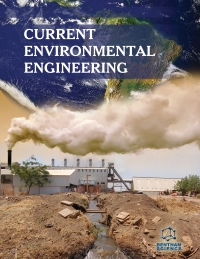-
s Analysis of Heavy Metals in Soil and Sediments Along the Bank and Bed of River Benue in Taraba State Nigeria
- Source: Current Environmental Engineering, Volume 6, Issue 2, Aug 2019, p. 141 - 149
-
- 01 Aug 2019
Abstract
Background: Atomic Absorption Spectroscopic (AAS) method is most commonly being used due to its reproducibility of results, short analysis time, cost effective, lower level detection and hyphenated in nature. Aims: The concentrations in mg/kg of six heavy metals of environmental implications which includes Cd, Cu, Fe, Mn, Pb and Zn were determined by Atomic Absorption Spectrophotometer PG Instrument Model AA090M046. Methods: Soil and sediments samples were collected at four distinct stations, designated ST1-ST4 which represents areas impacted by human activities on the bank and bed of River Benue, the second largest river in Nigeria. The mean concentrations of Cd and Pb (0.05 mg/kg and 1.26 mg/kg) were of toxicological concern. The decrease in concentrations of the metals across sampling stations followed this sequence Fe > Mn > Pb > Zn > Cu > Cd. The concentration of all heavy metals studied were significantly high in samples from station S4 and S1 compared to S2 and S3. Levels of metals associated with the exchangeable, reducible, oxidisable and residual fractions ranged from 0.083 mg/kg to 199.959 mg/kg; 0.037 mg/kg to 219.118 mg/kg; 0.040 mg/kg to 168.850 mg/kg and 0.037 mg/kg to 116.409 mg/kg respectively. Results: The soil and sediments were slightly alkaline with pH values ranging from 7.98 - 8.53. The mobility factor of cadmium in all the sample stations ranges from 28.06 – 69.27 mg/kg. The high value of Cd and Zn in the exchangeable fraction could indicate high mobility rate and readily availability of these metals for uptake by aquatic organisms. Conclusion: The aim of the study was therefore to assess the impact of metallic contaminants on the sediment, evaluate the pollution status of the sediments by the application of geoaccumulation index and their mobility rate.


